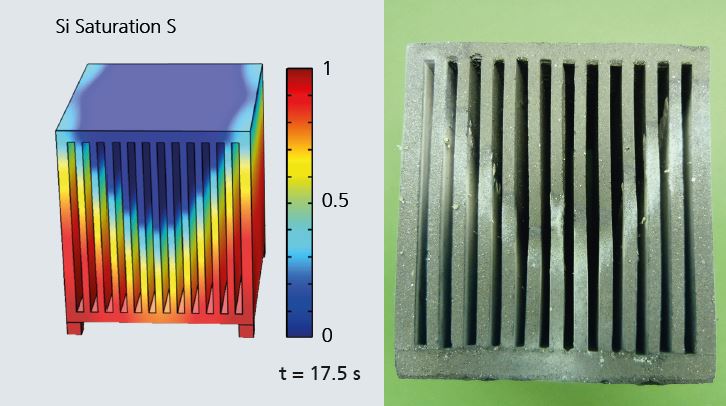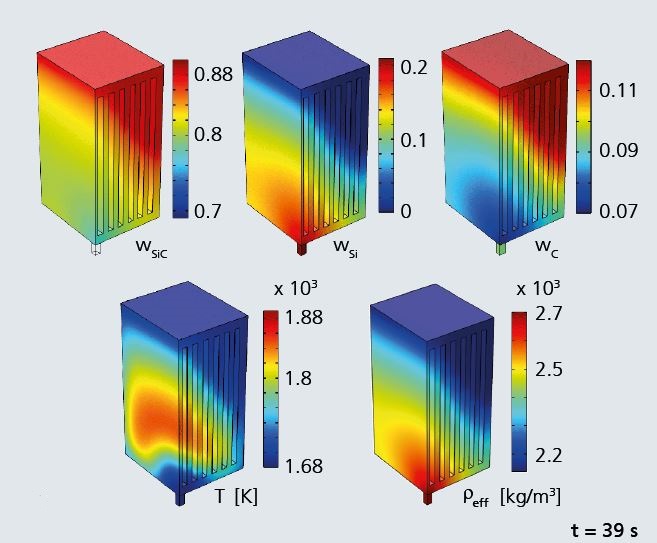

Reaction bonding is a well-known and widely used technology for manufacturing of high-quality engineering ceramic components, especially liquid silicon-infiltrated silicon carbide (SiSiC) components. In this process, a porous compacted preform (C-SiC) is infiltrated with molten silicon and converted through a reaction (Si[liquid] + C → SiC). Ceramic structure formation takes place not in the usual way via a sintering process, but instead in a nearly shrinkage-free manner via chemical reactions in which secondary binder phases are formed between the primary particles. The process is complex and error-prone (nonuniform filling, crack formation). Process control is usually purely empirical in practice because of the lack of standard modeling tools for the process.
A simulation platform for modeling of the process of reactive melt infiltration and reaction bonding in ceramic components was developed as part of a Fraunhofer-internal SMB-oriented research (MEF) project. The model was validated with a prototype. The model describes the fluid, heat, and substance transformation processes – extension to the induced thermomechanical stresses is planned. Modeling is based on a homogenized continuum description of the porous structure: the flow description utilizes a porous two-phase fluid approach (melt + inert gas/vacuum) with capillary pressure as the driving force for melt infiltration. Transport of thermal energy by convection, heat conduction, and radiation as well as any occurring substance transformations and heats of reaction are balanced. The model accounts for changes in the structural parameters (permeability, porosity, etc.) occurring during the process as a result of saturation and substance transformation by applying common correlations (van Genuchten approach, etc.) and simple models (reaction capillary model). A key priority was to keep the number of parameters to a minimum. The model was implemented using the COMSOL multiphysics finite element code and enables the analysis of 3D components.
The model allows the propagation of the infiltration, reaction, and temperature fronts in the component over time to be mapped and hence provides the possibility of analyzing various effects, such as the positioning of the melt supply wicks, the preform structural parameters (composition, pore distribution, etc.) and the process control parameters, as well as providing information on quantities (temperature, composition) inside the part that are difficult to access experimentally in-situ. The objective of the analysis is to optimize the process in order to avoid the formation of weld lines and high thermal gradients in critical zones of the component as a way of improving component quality and reducing the risk of failure.
A SiSiC heat exchanger segment was manufactured and analyzed as a practical technology demonstrator. The results widely confirmed the model predictions, for example, for the filling front propagation. The model can be applied to a variety of component geometries and may be adapted to alternate material systems.